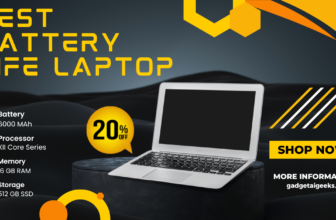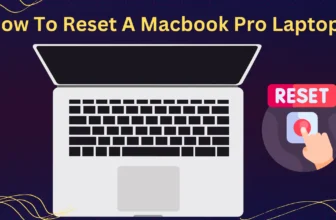LATEST POST












HOW WE REVIEWING THE PINNACLE OF LAPTOP TECHNOLOGY?
A Detailed Analysis Across Key Specifications
- Processor: Intel Core i9 vs. AMD Ryzen 9? We dissect the performance showdown.
- Graphics: NVIDIA GeForce RTX or AMD Radeon RX? Find the GPU that fuels your passions.
- Display: OLED, 4K, or high refresh rate? Immerse yourself in stunning visuals.
- Battery Life: Stay unplugged and productive with laptops that go the distance.
- Form Factor: Ultrabook, 2-in-1, or gaming powerhouse? Check out your ideal fit. And So Much More:
- Storage, RAM, connectivity, build quality – we leave no stone unturned.
EXPERT ANSWERS TO YOUR MOST COMMON QUESTIONS
What are the advantages of laptops with screen sizes under 15.6 inches?
Laptops with screen sizes under 15.6 inches offer enhanced portability and reduced weight, making them ideal for mobile professionals and students. Their compact form factor facilitates ease of transport and convenience in constrained environments.
What can I expect from laptops with screen sizes between 15.6 and 16.1 inches?
Laptops within the 15.6 to 16.1-inch range provide a balanced amalgamation of display real estate and portability. These models often feature high-resolution displays, offering immersive visual experiences while maintaining a manageable footprint for daily use.
Are there significant benefits to having a laptop with a screen size between 16.1 and 17 inches?
Laptops featuring screen sizes between 16.1 and 17 inches deliver expansive viewing areas, beneficial for multimedia editing, gaming, and multitasking. These larger displays facilitate superior productivity and visual clarity, albeit at the cost of increased bulk.
Why choose a laptop with a screen size over 17 inches?
Laptops with screen sizes exceeding 17 inches serve as formidable desktop replacements, providing extensive screen space ideal for professional workstations, gaming, and high-definition media consumption. However, they are less portable due to their size and weight.
What are the advantages of laptops with NVIDIA GPUs?
NVIDIA GPUs offer superior performance through advanced technologies like ray tracing, DLSS (Deep Learning Super Sampling), and CUDA cores. These features enhance gaming experiences, expedite rendering tasks, and support AI-driven applications, making them ideal for both gamers and creative professionals.
How do Intel GPUs compare to others in laptops?
Intel GPUs, integrated within the CPU, provide efficient power consumption and adequate performance for everyday tasks and light gaming. Intel’s Iris Xe graphics deliver significant improvements in integrated GPU performance, suitable for ultrabooks and thin-and-light laptops.
What benefits do AMD GPUs bring to laptops?
AMD GPUs offer robust performance and competitive pricing. With technologies like RDNA architecture and Smart Access Memory, AMD GPUs excel in gaming and creative workloads, providing high frame rates and efficient power management.
What is the Primary Function of the Sleep Button on a Laptop?
The primary function of the sleep button on a laptop is to quickly put the device into a low-power state without completely turning it off. This mode, known as "sleep mode," saves the current state of the laptop, including open applications and documents, to the RAM. It allows for a swift resume of activity when the laptop is reawakened, enabling users to continue their work almost instantly. Sleep mode is particularly useful for conserving battery life while maintaining the ability to quickly return to tasks without the need for a full system reboot.
In the context of a Dell laptop, locating the sleep button and understanding its functionality can enhance user convenience. For Dell laptops, the sleep button might be a specific key on the keyboard, often combined with the "Fn" key, or it could be a dedicated button on the laptop's casing. Knowing how to effectively use the sleep button can optimize power management and improve the overall user experience.
What RAM configuration is ideal for gaming laptops?
Gaming laptops benefit from 16GB of RAM to ensure optimal performance and responsiveness in modern games. For future-proofing and handling more demanding titles, configurations with 32GB or even 64GB of RAM can provide a substantial performance boost.
Which is better for laptops, Intel or AMD processors?
Intel or AMD processors both are highly capable and offer distinct advantages, making them suitable for a variety of computing needs. Intel processors are renowned for their strong single-thread performance and power efficiency, which are beneficial for a wide range of applications. Conversely, AMD processors offer exceptional multi-thread performance and value, often featuring more cores and threads at a given price point, making them ideal for multitasking and demanding applications.
What should I consider regarding processor speed in laptops?
Processor speed, indicated in GHz, directly impacts how swiftly a laptop can process data. Speeds between 2.5 to 3.2 GHz are sufficient for general tasks, while higher speeds are advantageous for resource-intensive tasks like gaming, video editing, and software development.
What features should I prioritize in a modern laptop?
Prioritize features such as high-resolution displays, backlit keyboards, biometric security (e.g., fingerprint scanners), robust build quality, extended battery life, and fast storage solutions like SSDs and NVMe drives. Additionally, consider features like Thunderbolt 4 ports, Wi-Fi 6E connectivity, and advanced cooling systems for high-performance models.
Which ports are essential on a laptop?
Essential ports include USB-C, USB-A, HDMI, Thunderbolt 4, Ethernet, and a headphone jack. Depending on your usage, an SD card reader, additional USB ports, and a dedicated GPU output (e.g., mini DisplayPort) might also be valuable.
How does laptop weight affect usability?
Lighter laptops, typically under 4 pounds, enhance portability and are easier to carry, making them suitable for professionals and students who are frequently on the move. Heavier laptops, often associated with high-performance components and larger displays, offer greater functionality but are less convenient to transport.
What is the ideal resolution for a laptop display?
A resolution of 1920x1080 (Full HD) provides sharp and clear images for general use. Higher resolutions, such as 2560x1440 (QHD) and 3840x2160 (4K), are beneficial for professional graphic design, video editing, and detailed media consumption, although they may result in higher power consumption.
Why is refresh rate important in a laptop display?
Higher refresh rates, such as 120Hz or 144Hz, offer smoother and more responsive visuals, significantly enhancing the experience in fast-paced applications like gaming and video playback. Standard 60Hz displays are adequate for everyday tasks.
How much storage do I need on my laptop?**
For basic usage, a 256GB SSD is generally sufficient. For gaming, media editing, and large file storage, consider a 512GB or 1TB SSD. Larger capacities, such as 2TB, are ideal for extensive media libraries and professional work requiring substantial storage space.
Where can I purchase reliable laptops?
Reliable sources for purchasing laptops include online retailers like Amazon, Best Buy, Newegg, and manufacturer websites such as Dell, HP, and Apple. Physical electronics stores offer the advantage of in-person product evaluation and immediate purchase.
How many cores should a laptop processor have?
For general use, a quad-core processor is sufficient. For gaming, video editing, and professional applications, hexa-core or octa-core processors provide superior performance, facilitating better multitasking and handling demanding tasks more efficiently.
What constitutes good battery life for a laptop?
A good battery life for a laptop is around 8-10 hours of mixed usage. Ultrabooks and productivity-focused laptops often achieve longer battery life, while gaming laptops typically offer shorter durations due to higher power consumption from performance components.
What biometric security features are available in laptops?
Common biometric security features in laptops include fingerprint scanners and facial recognition systems. These technologies enhance security and provide convenient, password-free access to the device, utilizing hardware like Windows Hello for seamless integration
Why is the maximum supported RAM important?
Understanding the maximum supported RAM of a laptop is crucial for planning future upgrades, ensuring the device can handle increasingly demanding applications and workloads as user requirements evolve.
What are the benefits of a laptop with a 2 in 1 laptop?
2-in-1 laptops offer a unique blend of portability and versatility. They function both as a traditional laptop and a tablet, providing the benefit of a touchscreen with the utility of a keyboard. This makes them ideal for a wide range of activities, from productivity tasks like writing and spreadsheet management to creative endeavors such as digital art and design. Their compact form factor makes them highly portable, suitable for those who need a functional device on the go. Moreover, their flexible design allows for multiple modes of use—laptop, tablet, tent, and stand—catering to different preferences and situations, whether you're working, presenting, or relaxing.
What should I look for in a gaming laptop?
For gaming, prioritize a powerful GPU (e.g., NVIDIA GeForce RTX series), high refresh rate display, efficient cooling systems, and at least 16GB of RAM. Additionally, a fast processor, ample storage (preferably NVMe SSD), and robust build quality are essential.
What makes a laptop good for college students?
A good college laptop combines portability, robust performance, and long battery life. It should be lightweight for easy transport between classes, have sufficient processing power for both coursework and entertainment, and feature a battery that can last through a day of classes.
Why is screen resolution important in video editing laptops?
Higher screen resolutions needed for video editing laptops, such as 4K or 5K, provide greater detail and clarity. This allows video editors to see every fine detail in their footage, making precise edits and adjustments. Additionally, higher resolution displays offer more screen real estate, enabling editors to view their timeline, preview window, and toolbars simultaneously without constant scrolling or switching between windows. This enhances productivity and accuracy in editing high-resolution content.
What CPU specifications are critical for music production laptops?
A powerful CPU is essential for music production laptops. Look for laptops with multi-core processors, such as Intel Core i7 or i9, or AMD Ryzen 7 or 9. These CPUs can handle multiple audio tracks, virtual instruments, and effects without lag or crashes. Higher clock speeds (measured in GHz) are also important for processing complex audio tasks quickly and efficiently.
What connectivity options are important for music production laptops?
Essential connectivity features include multiple USB ports (preferably USB 3.0 or higher), Thunderbolt 3 ports for high-speed data transfer, and reliable audio interface compatibility. Additional ports for MIDI controllers, external monitors, and other peripherals are also important for a flexible and efficient production setup.
what is difference between Chromebook vs laptop?
Both Chromebooks and traditional laptops have hardware specifications tailored to their intended use cases. Chromebooks typically have modest hardware specifications, including lower-end processors, less RAM, and limited storage, making them lightweight and efficient. Traditional laptops, on the other hand, can be equipped with high-performance processors, ample RAM, and significant storage capacity, making them suitable for more demanding tasks. Chromebooks and traditional laptops support a variety of applications, but their focus differs. Chromebooks are designed for web-based applications and support Android apps through the Google Play Store, making them ideal for tasks such as browsing, streaming, and using cloud-based productivity tools. Traditional laptops can run a wide range of software,
